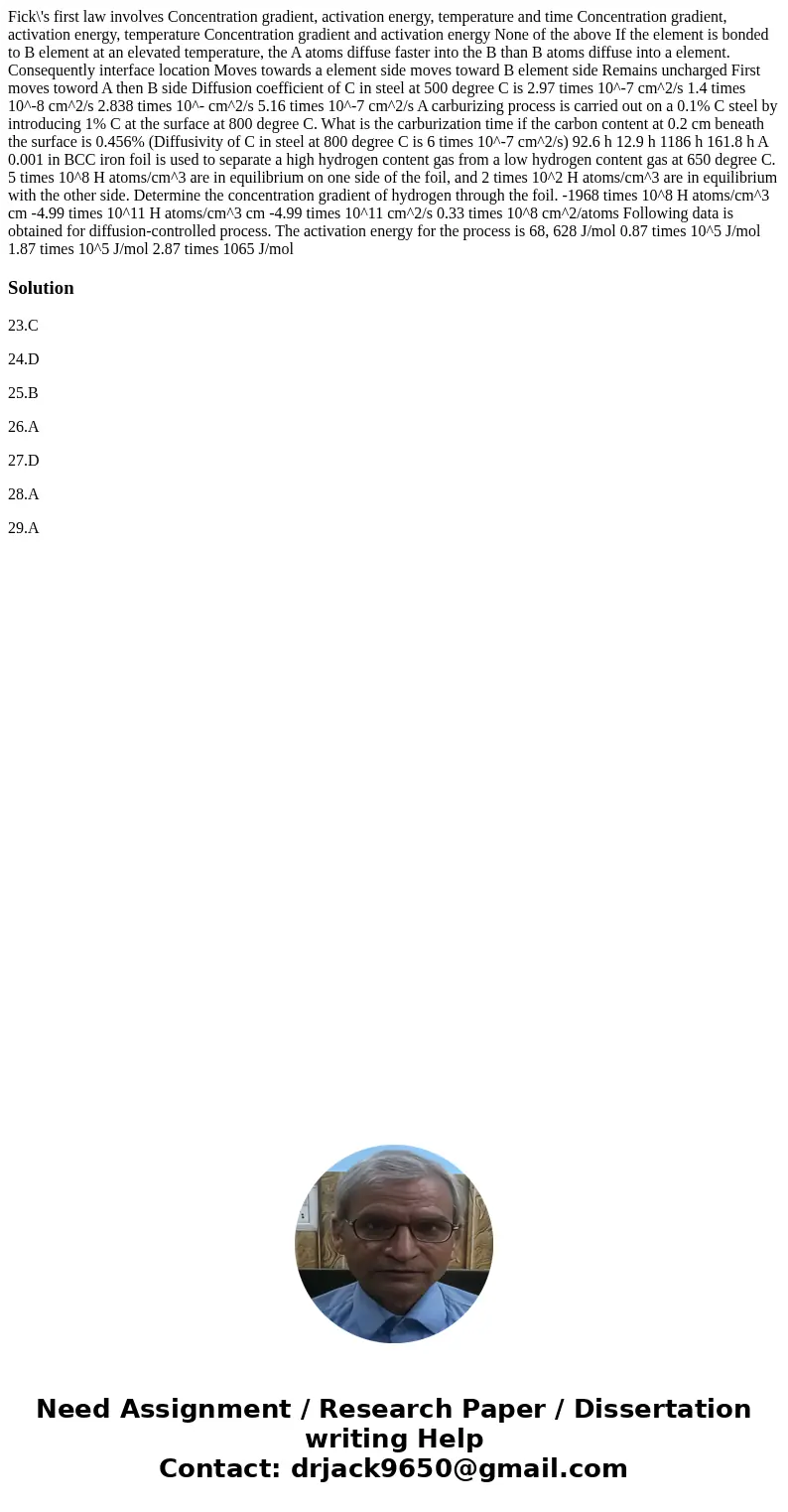Ficks first law involves Concentration gradient activation e
Fick\'s first law involves Concentration gradient, activation energy, temperature and time Concentration gradient, activation energy, temperature Concentration gradient and activation energy None of the above If the element is bonded to B element at an elevated temperature, the A atoms diffuse faster into the B than B atoms diffuse into a element. Consequently interface location Moves towards a element side moves toward B element side Remains uncharged First moves toword A then B side Diffusion coefficient of C in steel at 500 degree C is 2.97 times 10^-7 cm^2/s 1.4 times 10^-8 cm^2/s 2.838 times 10^- cm^2/s 5.16 times 10^-7 cm^2/s A carburizing process is carried out on a 0.1% C steel by introducing 1% C at the surface at 800 degree C. What is the carburization time if the carbon content at 0.2 cm beneath the surface is 0.456% (Diffusivity of C in steel at 800 degree C is 6 times 10^-7 cm^2/s) 92.6 h 12.9 h 1186 h 161.8 h A 0.001 in BCC iron foil is used to separate a high hydrogen content gas from a low hydrogen content gas at 650 degree C. 5 times 10^8 H atoms/cm^3 are in equilibrium on one side of the foil, and 2 times 10^2 H atoms/cm^3 are in equilibrium with the other side. Determine the concentration gradient of hydrogen through the foil. -1968 times 10^8 H atoms/cm^3 cm -4.99 times 10^11 H atoms/cm^3 cm -4.99 times 10^11 cm^2/s 0.33 times 10^8 cm^2/atoms Following data is obtained for diffusion-controlled process. The activation energy for the process is 68, 628 J/mol 0.87 times 10^5 J/mol 1.87 times 10^5 J/mol 2.87 times 1065 J/mol
Solution
23.C
24.D
25.B
26.A
27.D
28.A
29.A

 Homework Sourse
Homework Sourse